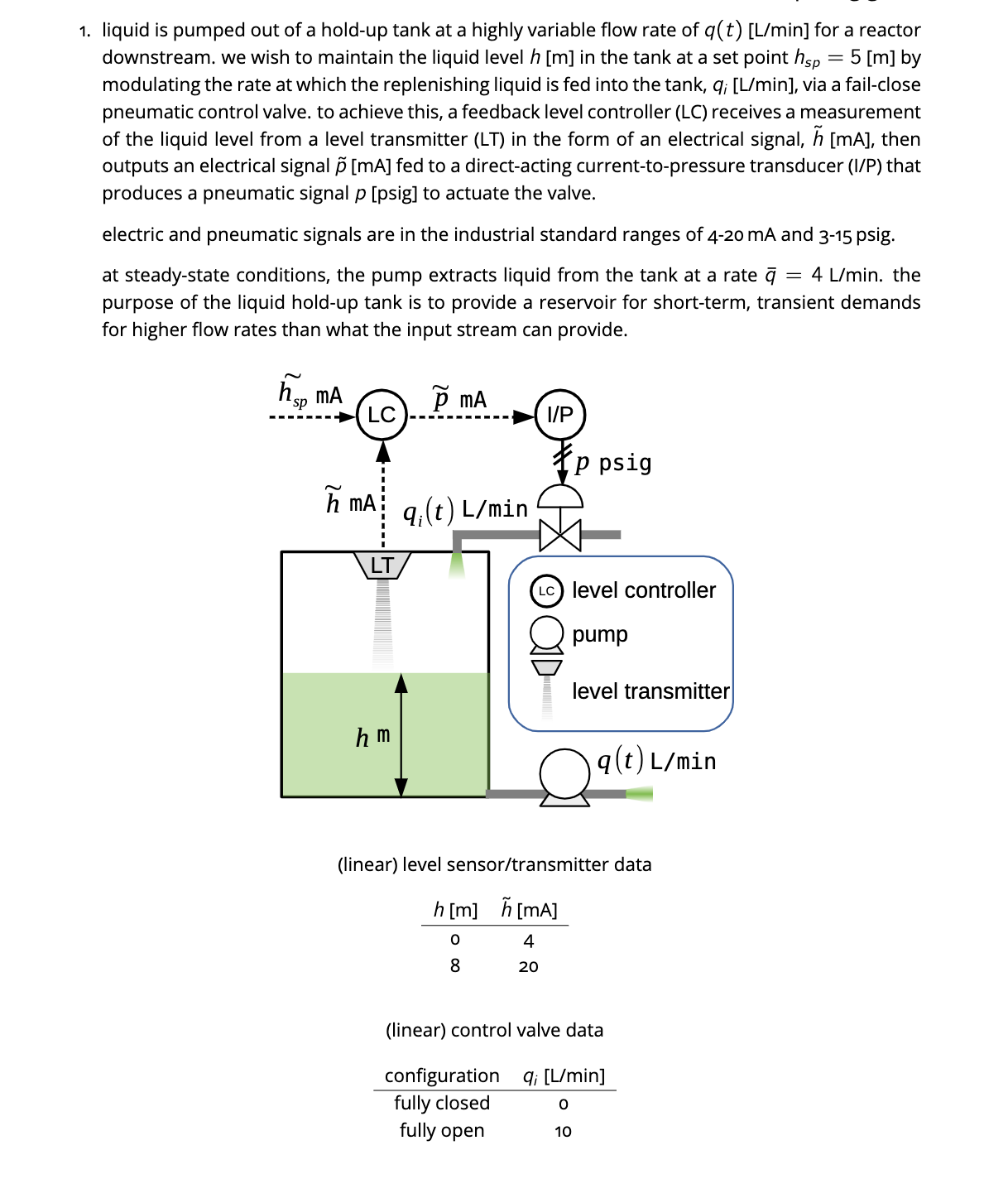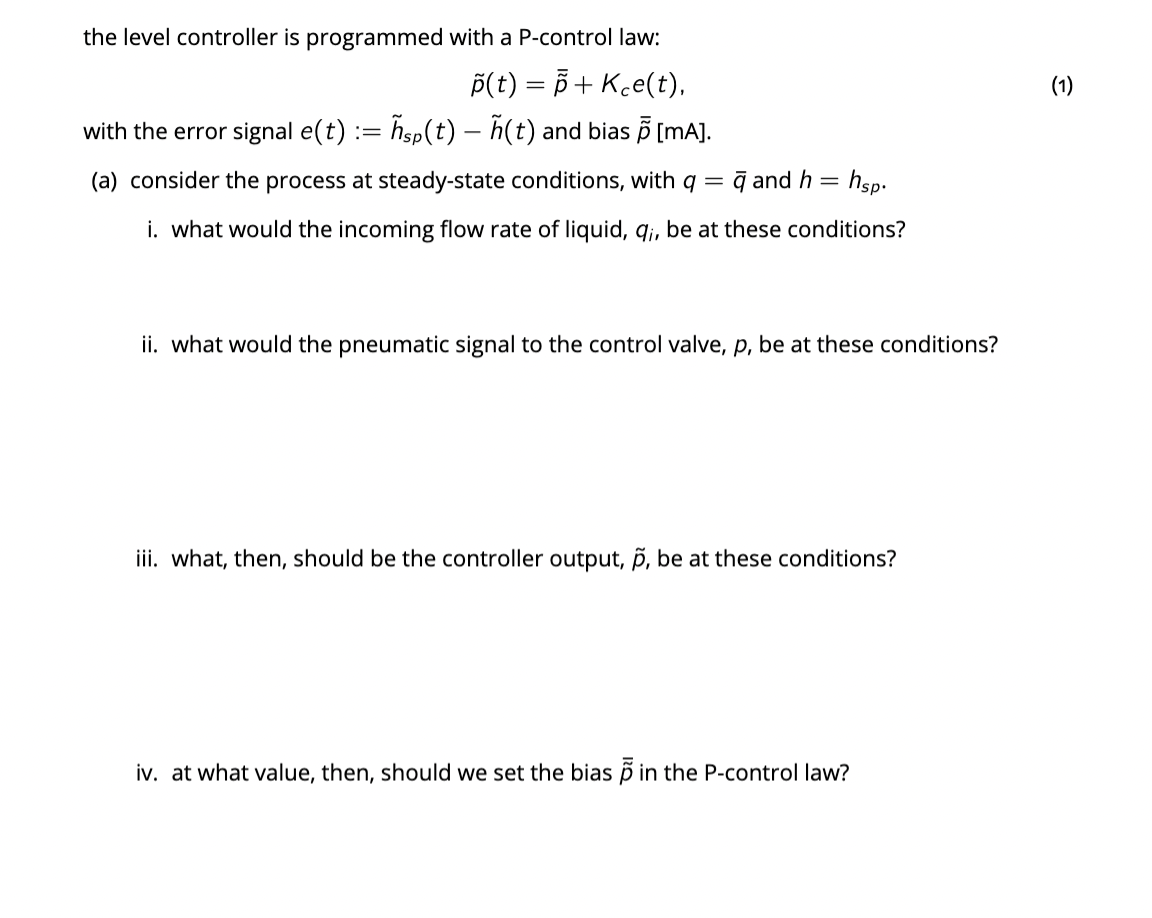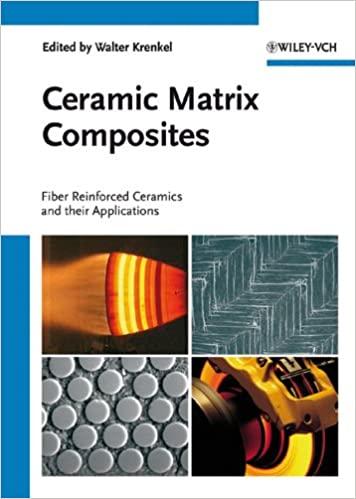Answered step by step
Verified Expert Solution
Question
1 Approved Answer
1. liquid is pumped out of a hold-up tank at a highly variable flow rate of q(t) [L/min] for a reactor downstream. we wish to

 1. liquid is pumped out of a hold-up tank at a highly variable flow rate of q(t) [L/min] for a reactor downstream. we wish to maintain the liquid level h[m] in the tank at a set point hsp=5[m] by modulating the rate at which the replenishing liquid is fed into the tank, qi [L/min], via a fail-close pneumatic control valve. to achieve this, a feedback level controller (LC) receives a measurement of the liquid level from a level transmitter (LT) in the form of an electrical signal, h~[mA], then outputs an electrical signal p~[mA] fed to a direct-acting current-to-pressure transducer (I/P) that produces a pneumatic signal p[psig] to actuate the valve. electric and pneumatic signals are in the industrial standard ranges of 4-20 mA and 3-15 psig. at steady-state conditions, the pump extracts liquid from the tank at a rate q=4L/min. the purpose of the liquid hold-up tank is to provide a reservoir for short-term, transient demands for higher flow rates than what the input stream can provide. (linear) level sensor/transmitter data (linear) control valve data the level controller is programmed with a P-control law: p~(t)=p~+Kce(t) with the error signal e(t):=h~sp(t)h~(t) and bias p~[mA]. (a) consider the process at steady-state conditions, with q=q and h=hsp. i. what would the incoming flow rate of liquid, qi, be at these conditions? ii. what would the pneumatic signal to the control valve, p, be at these conditions? iii. what, then, should be the controller output, p~, be at these conditions? iv. at what value, then, should we set the bias p~ in the P-control law
1. liquid is pumped out of a hold-up tank at a highly variable flow rate of q(t) [L/min] for a reactor downstream. we wish to maintain the liquid level h[m] in the tank at a set point hsp=5[m] by modulating the rate at which the replenishing liquid is fed into the tank, qi [L/min], via a fail-close pneumatic control valve. to achieve this, a feedback level controller (LC) receives a measurement of the liquid level from a level transmitter (LT) in the form of an electrical signal, h~[mA], then outputs an electrical signal p~[mA] fed to a direct-acting current-to-pressure transducer (I/P) that produces a pneumatic signal p[psig] to actuate the valve. electric and pneumatic signals are in the industrial standard ranges of 4-20 mA and 3-15 psig. at steady-state conditions, the pump extracts liquid from the tank at a rate q=4L/min. the purpose of the liquid hold-up tank is to provide a reservoir for short-term, transient demands for higher flow rates than what the input stream can provide. (linear) level sensor/transmitter data (linear) control valve data the level controller is programmed with a P-control law: p~(t)=p~+Kce(t) with the error signal e(t):=h~sp(t)h~(t) and bias p~[mA]. (a) consider the process at steady-state conditions, with q=q and h=hsp. i. what would the incoming flow rate of liquid, qi, be at these conditions? ii. what would the pneumatic signal to the control valve, p, be at these conditions? iii. what, then, should be the controller output, p~, be at these conditions? iv. at what value, then, should we set the bias p~ in the P-control law Step by Step Solution
There are 3 Steps involved in it
Step: 1

Get Instant Access to Expert-Tailored Solutions
See step-by-step solutions with expert insights and AI powered tools for academic success
Step: 2

Step: 3

Ace Your Homework with AI
Get the answers you need in no time with our AI-driven, step-by-step assistance
Get Started


